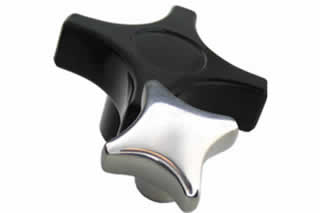
Thermoplastic and thermoset are two common types of polymer-based materials used in the manufacturing industry. They are used to make everything from knobs and buttons to cable shielding, machine parts and more. Thermoplastic isn’t the same as thermoset, however. While they both contain polymer powder, they have different properties.
What Is Thermoplastic?
Thermoplastic is a polymer-based material that’s characterized by the use of repeating monomer links. The monomers are essentially linked together into chains. Thermoplastic is typically made by melting a polymer material, followed by recasting it. Once the melted polymer material cools, it will harden while simultaneously forming a plastic.
Features of thermoplastic include the following:
- Lower cost
- Easy to recycle
- Supports reshaping and remolding
- Offers excellent electrical resistance
- Resistant to corrosion
What Is Thermoset?
Thermoset, on the other, is a type of polymer-based material that’s characterized by an irreversibly hardening curing method. In other words, it’s made by curing a polymer material. After being cured, the polymer-based material will maintain its newfound hardness. Most thermoset materials are cured using heat, which may or may not be accompanied by pressure. The main difference between thermoplastic and thermoset is that the former is made by melting polymer material, whereas the latter does not. Thermoset still uses heat, but it doesn’t completely melt the polymer.
There are certain molding processes used to make thermoset, two of which include reaction injection molding and resin transfer molding. Reaction injection molding is a molding process in which the heated polymer is injected into a mold cavity. Resin transfer molding is an alternative molding process where the heated polymer is placed into a mold cavity and then cured. Regardless, thermoset is a type of polymer-based material with irreversibly hardening properties.
Features of thermoset include the following:
- Better protection against extreme temperatures
- Ability to withstand higher compressive forces
- More resistant to shrinkage
- Superior strength and durable
- Available in a variety of finishes
Differences Between Thermoplastic and Thermoset
Polymers are the foundation for both thermoplastic and thermoset materials. Both thermoplastic and thermoset are made using polymers. For thermoplastic, the polymer is melted to achieve a liquid state, after which it’s placed inside of a mold. For thermoset, the polymer is exposed to heat and, in some cases, pressure. Thermoset requires more work to produce but offers several advantages. Thermoset is stronger, better protected against extreme temperatures, able to withstand higher compressive forces, is more resistant to shrink and available in a variety of finishes.
